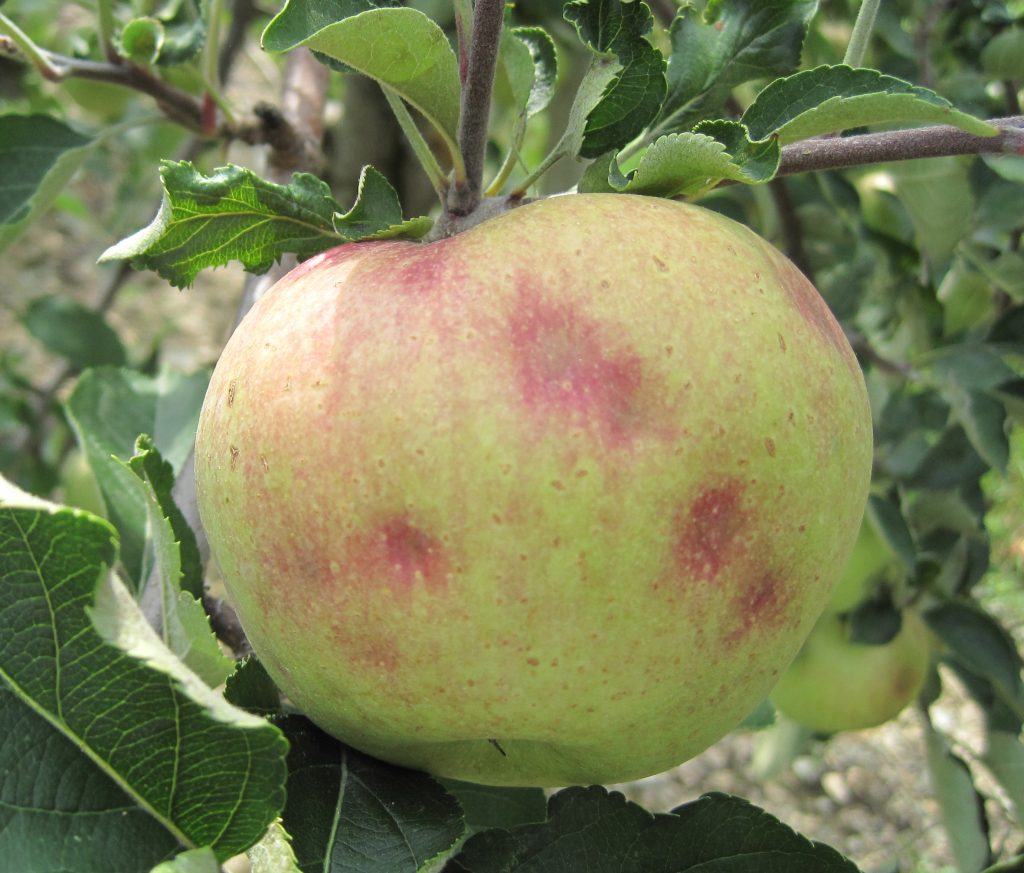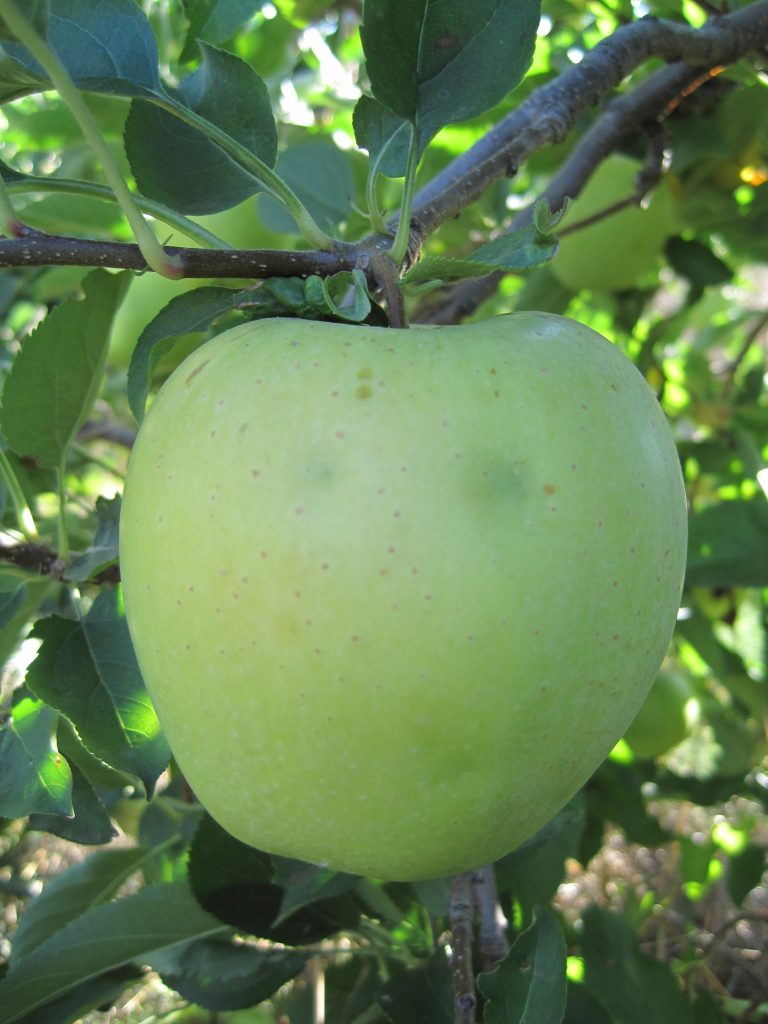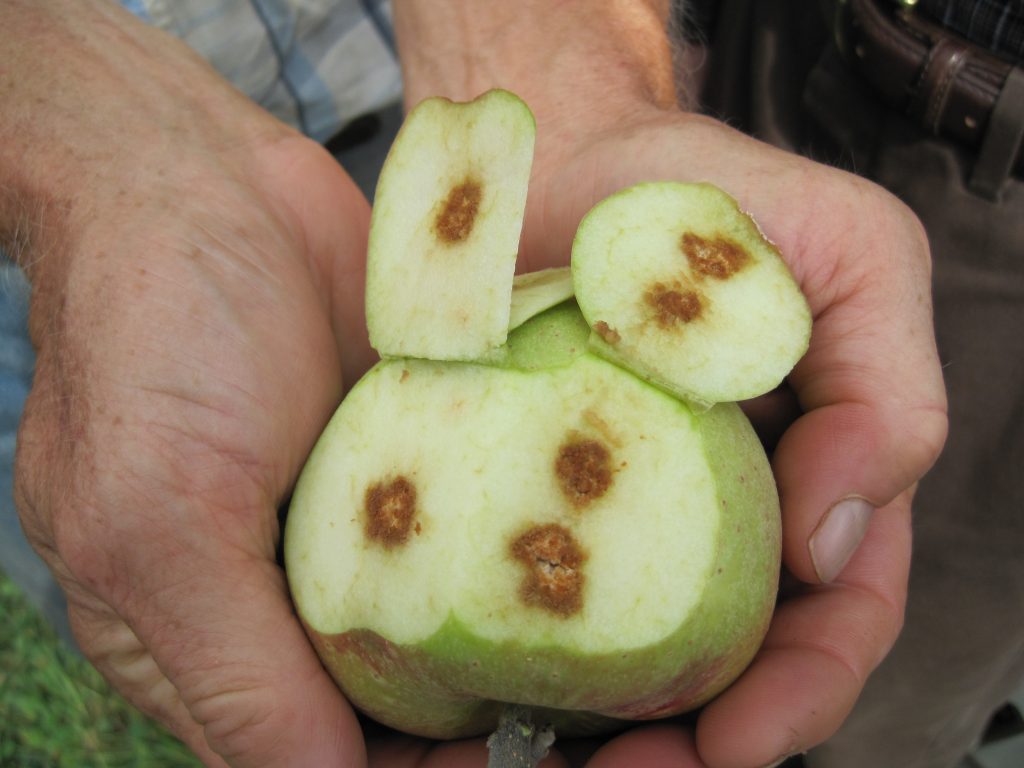Researchers from around our region are reporting much higher captures of brown marmorated stink bug (BMSB) in pheromone traps than have been recorded at this point in the season in recent years. Based on experience, we might expect BMSB numbers to increase over the next few weeks. Its feeding on tree fruits in August and September can result in substantial injury at harvest. Also, of course more adults can translate to higher numbers of BMSB invading homes and other buildings during their dispersal to overwintering sites between the latter portion of September through much of October. My post on August 11 included a table of insecticides that are considered effective against BMSB and a a reminder that scouting for BMSB injury (photos below) in apple orchards at this point might be most efficiently accomplished by examining fruit from the mid- and upper canopy of trees in border rows adjacent to woods; this is the “zone” where its injury at harvest has been most prevalent. I encourage growers to be vigilant in paying attention to this as the crop matures.




